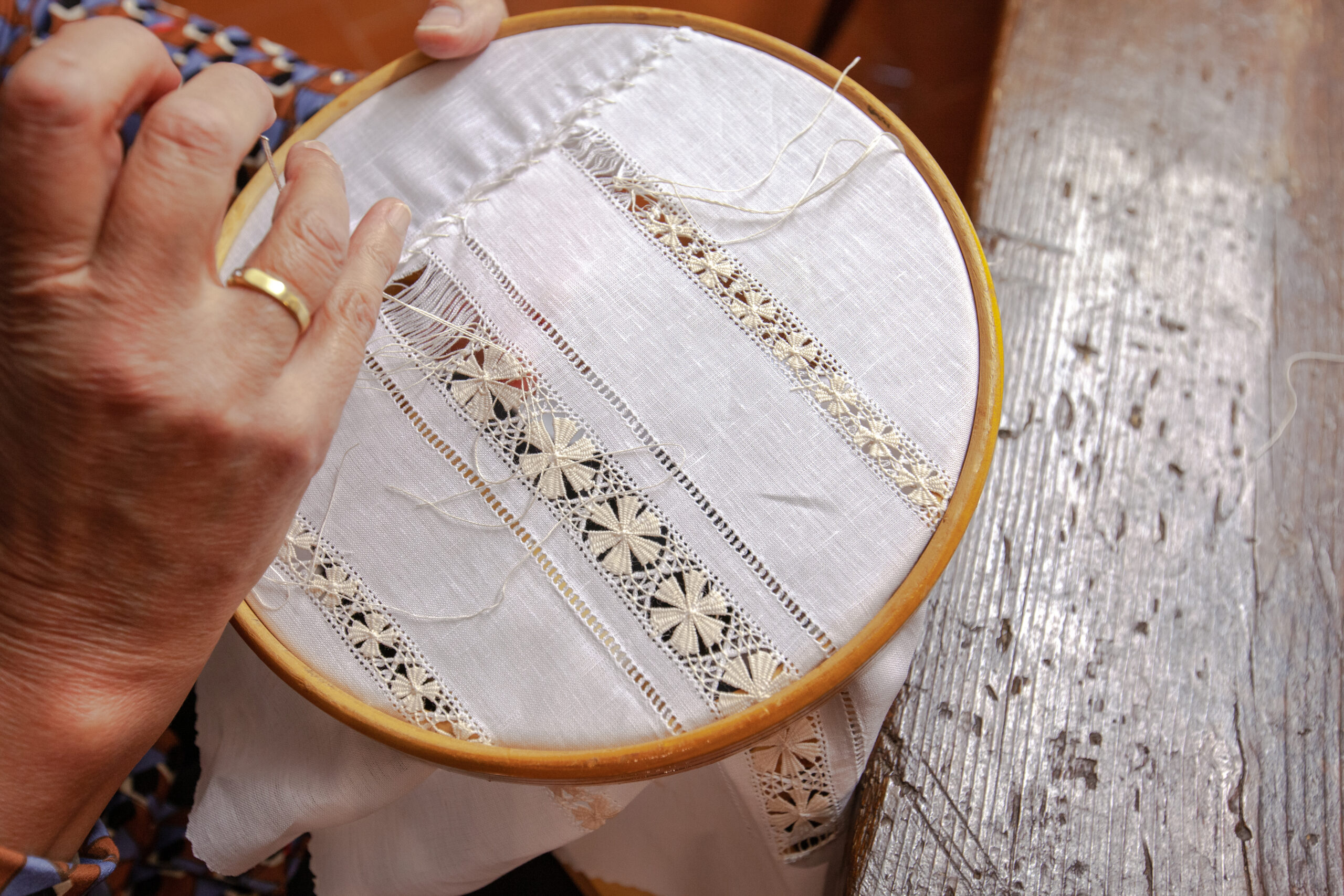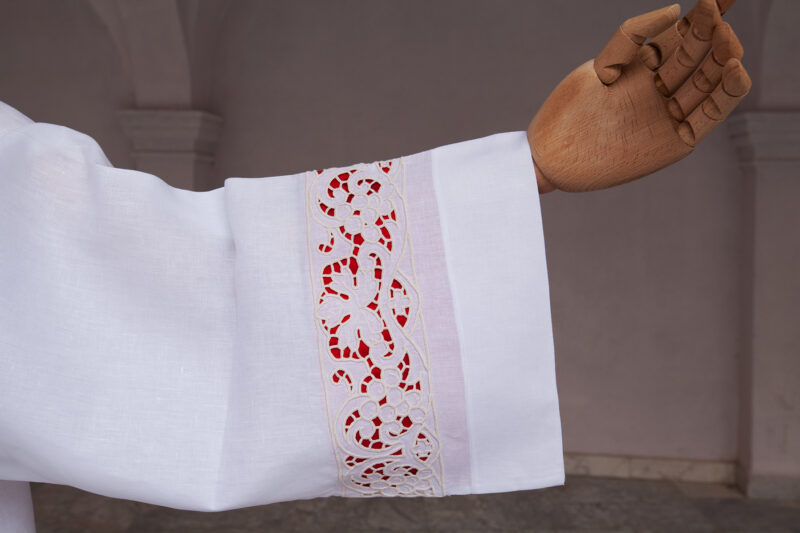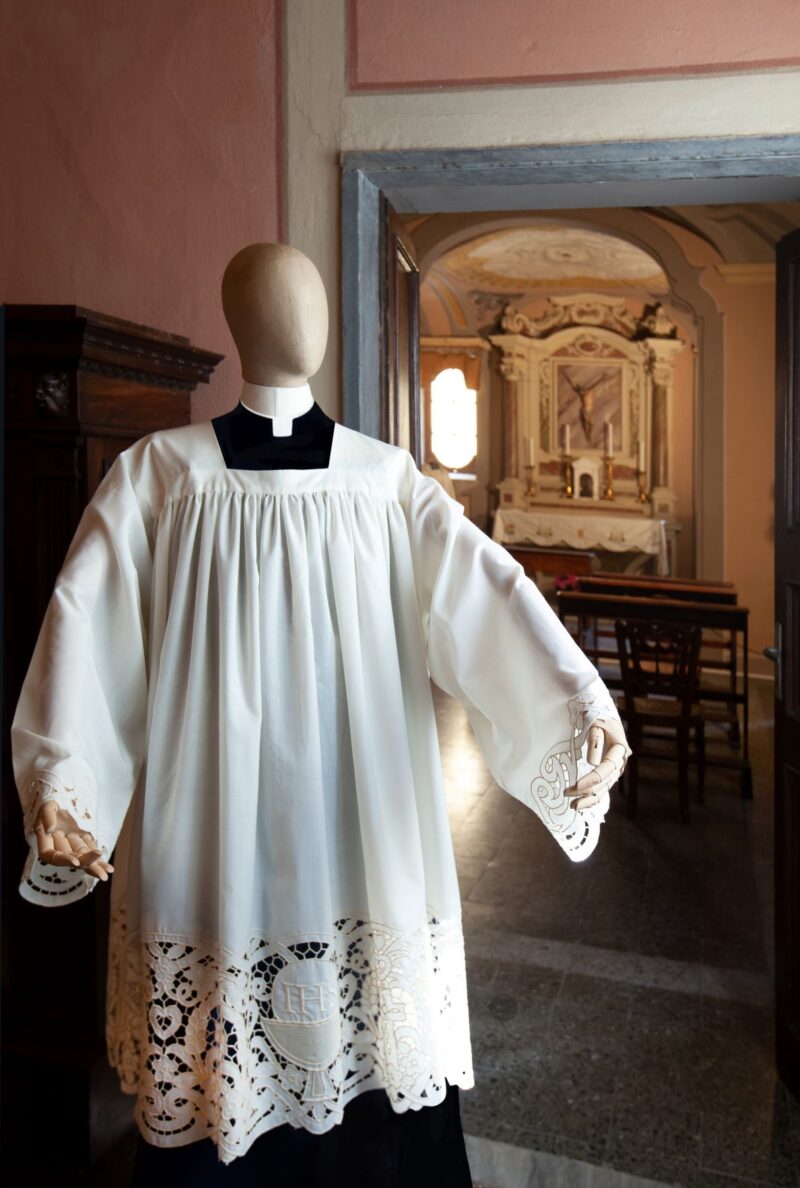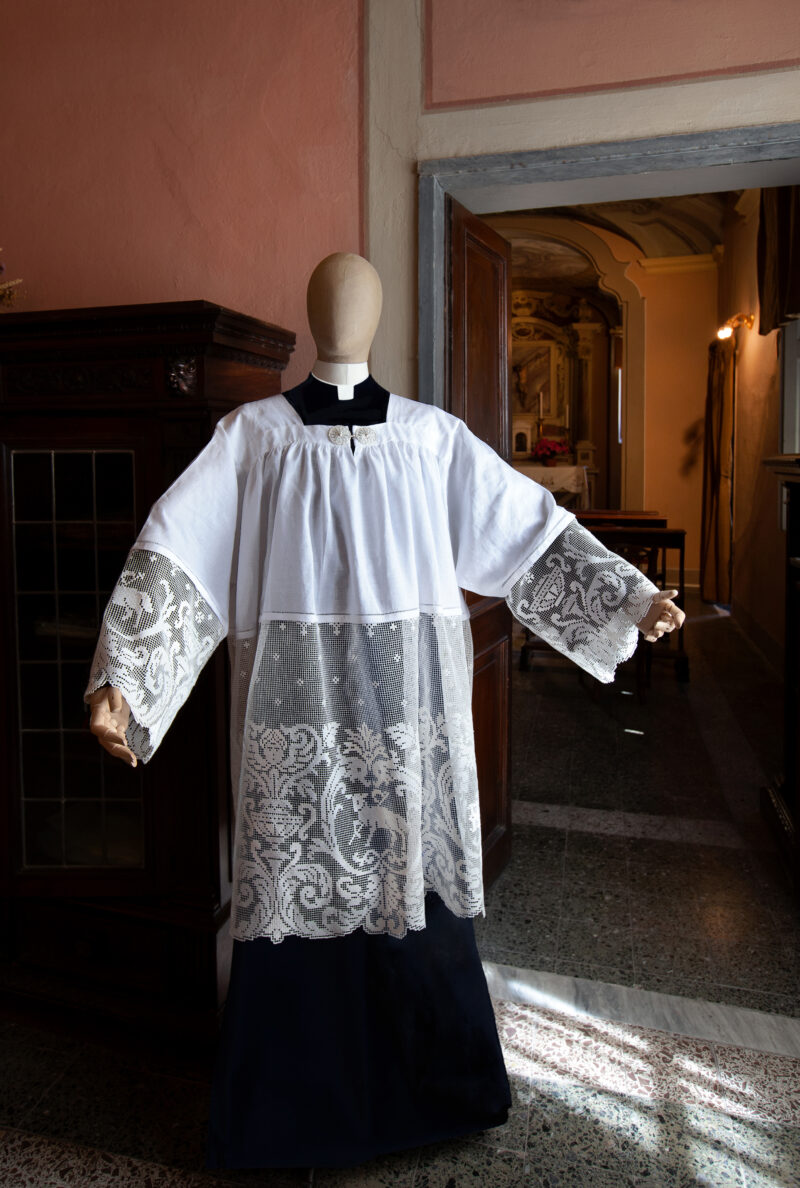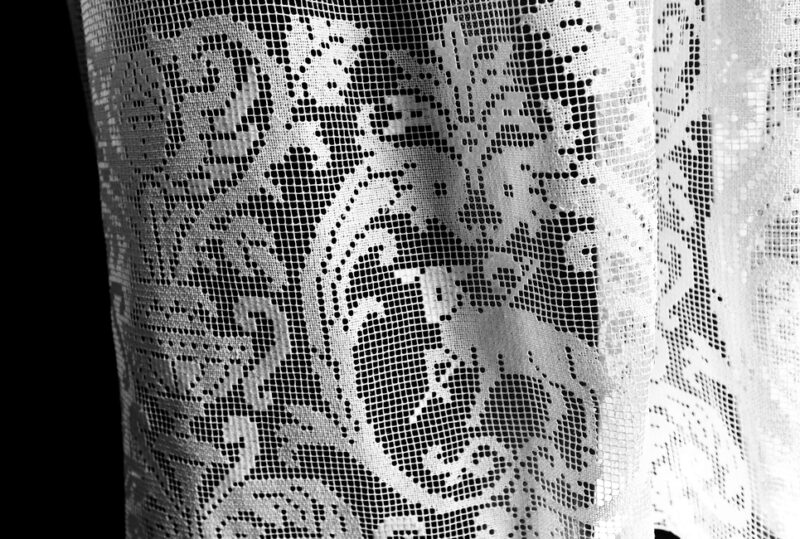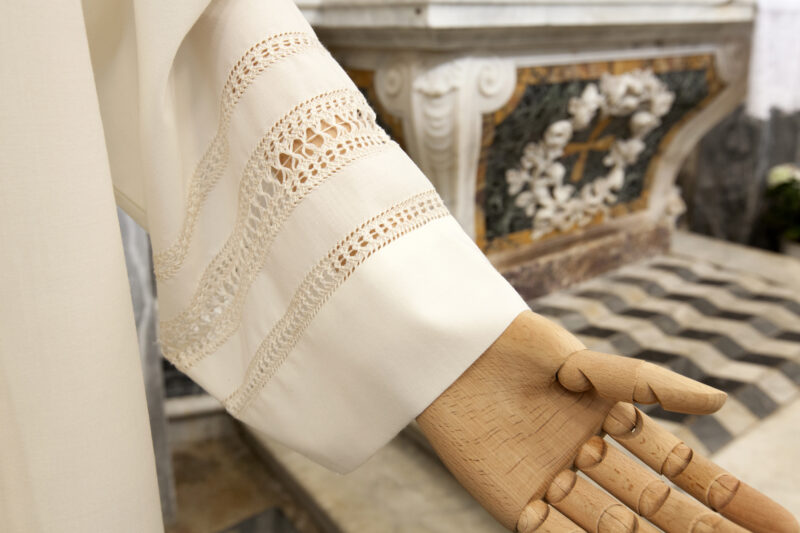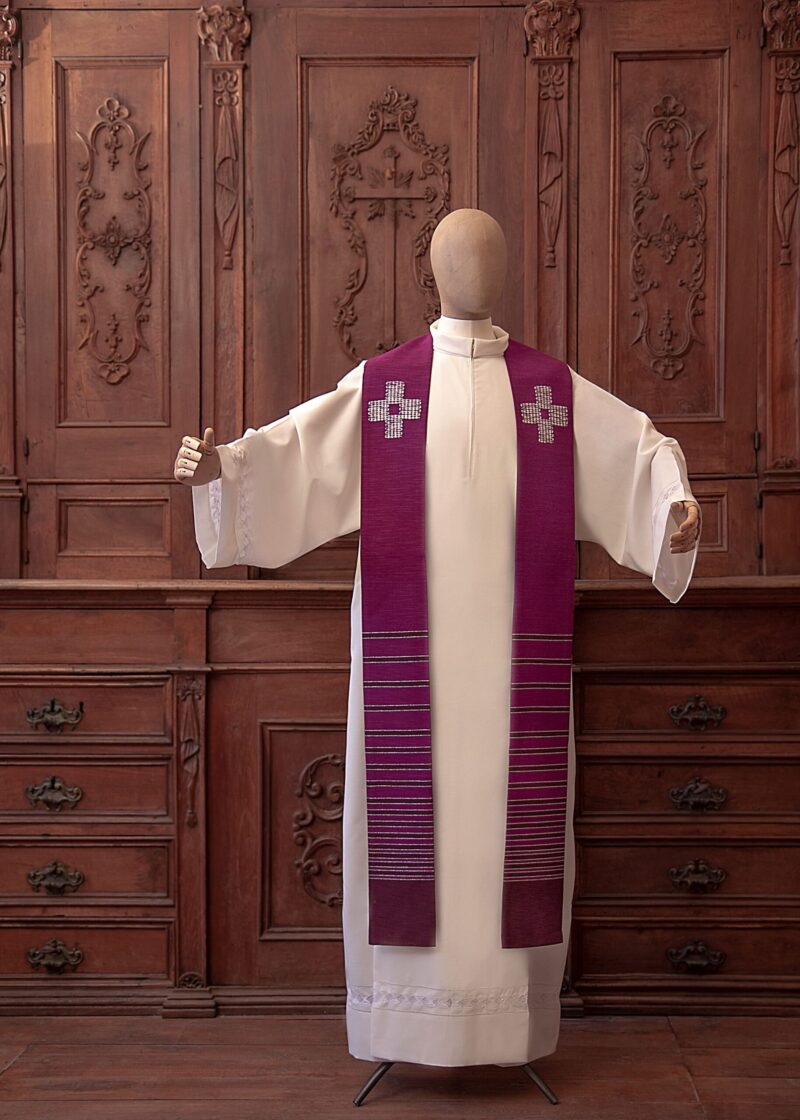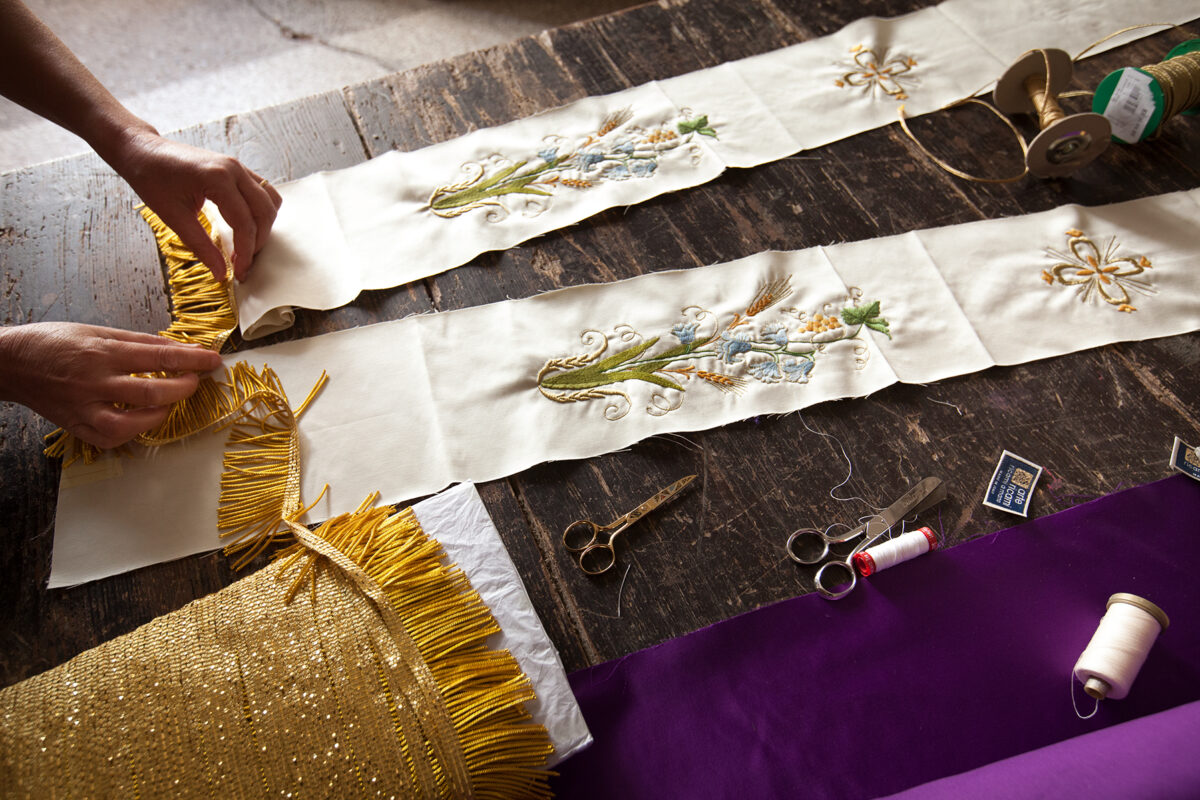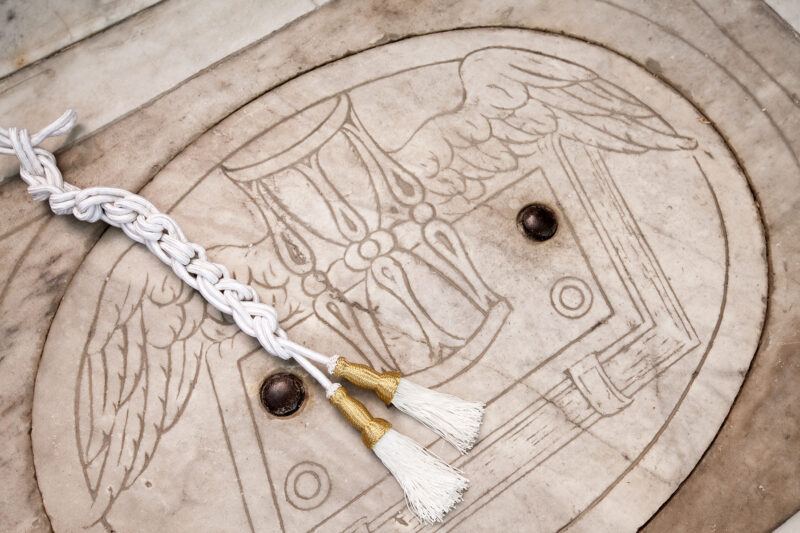Albs and surplices
The alb is the long robe worn by all ministers of the Church -priest, bishop, cardinal, priest, deacon- over the common clothes. Wearing the alb symbolically recalls the white robe of baptism. Just as with the baptismal robe, the alb and the surplice also symbolize purity and rebirth in Christ, which is why the color of this vestment is white or ivory.
The best fabric for albs and surplices
What distinguishes our albs is not only the precious hand embroidery, but also the quality of the fabric. In fact, we believe that the alb should be made of fabrics that are comfortable for the priest and deacons and do not cause sweat.
Our embroideries are made on fresco di lana (wool-trevira fabric) or linen/polyester fabric. The natural fabric makes the garment breathable and lightweight, while the percentage of polyester makes it easy to maintain in washing and ironing.
Where there is elaborate embroidery and at the customer’s request we also make pure linen albs and surplices, which are cool in the summertime and more suitable for making hand embroidery stand out. The albs can have two, four or six pleats or can be fully pleated as well.
Hand embroidered albs and surplices
Arte Ricami albs are known for the precious hand embroidery on the skirt and on the sleeves. There are two types of embroidery that we mainly use for albs and surplices: hemstitch and cutwork embroidery.
Our most representative alb motif is the vatican style embroidery consisting of 5 rounds of hemstitch, in gray or ivory. In addition to this, we have many other types of elegant draw thread work. Request us some pictures.
The Richelieu embroidery (cutwork) is suitable for both surplices and rochets, is distinguished by its preciousness and elegance. It is the height of the embroidery that decides its solemnity and importance. We make surplices and rochets with laces up to 70cm high. Finally we make albs and surplices with filet lace, either as an insert or to finish.
Colorful linings can be applied under the embroidery, depending on the order.
All our garments are made to measure.
What is the difference between surplice and rochets?
The surplice is worn by the priest over the cassock, except during Holy Mass where the alb is used. If a priest wears it during a Mass it means he is not celebrating but only assisting. We have surplices with Vatican style embroidery or different types of draw thread embroidery. We make pleated surplices and surplices upon request.
The rochet is in shape very similar to the surplice, except for the cut of the sleeves and the length, but it cannot be worn as the final gown over the cassock. In fact, it is a choral habit that always needs to be covered by an additional vestment worn by cardinals, bishops and prelates. Our rochets feature hand made filet lace decoration and Richelieu lace. A fabric cloth of the desired color can be inserted under the embroidery.
How to choose the alb for ordination
The alb is a customizable vestment starting from the decoration on the sleeves and skirt to the type of tailoring: Roman square collar, round collar or other details typical of your country.
In addition to choosing the type of fabric, you can view images of our already made garments to see what kind of embroidery you would like to have on your ordination alb. The surplice can also be ordered made to measure and with your preferred type of embroidery. If you are looking for your priestly or deacon ordination surplice, write to us for all the information you would like.
find out more
Priest and Deacon stole
What is the meaning of the priest stole? The stole is the distinctive element of the priest, deacon and every other celebrant. It represents the Church and the responsibility borne…
Hand embroidery
Hand embroidery is the beginning of our story. In 1932, Arte Ricami was founded as an embroidery and tailoring school for women from Fosdinovo, our village, a place to express…
